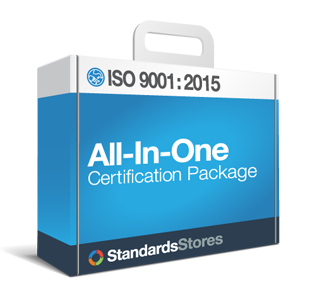Common ISO 9001:2015 Non-conformances
Let’s take a look at the most common non-conformances discovered during audits of ISO 9001:2015 quality management systems. We have put together a list of common non-conformances our clients have come across with ISO 9001:2015. We have broken down the non-conformances by clause, or section.
Clause 4: Many clients are failing to identify and define interested parties. This is a requirement new for 2015 (from 2008), and it is imperative that your organization meets this requirement. Additionally, in clause 4, many companies are failing to meet the requirement of monitoring and measuring processes.
Clause 6: Another requirement new to 2015 from 2008 that many organizations are failing to meet is planning actions when changes are being made to the QMS. Additionally, many auditors are also finding that organizations are failing to properly evaluate risks, and the standard requires that you must evaluate risks throughout the entire organization. Oftentimes organizations are failing to meet this requirement in parts of their business such as warehouses and external issues.
Clause 7: Accuracy with measurement devices is mandatory, and many organizations are using measuring devices that produce inaccuracies and therefore failing to meet the requirements. Make sure your organization is using the accurate tool for the device and that your measurement devices are up to code and are appropriate. Furthermore, it is key to keep records of any training or education and on-going findings.
Clause 8: Section 8 focuses on the control of operations. The most common problem auditors are finding are problems with first piece inspections, and receiving inspections. Additionally, it is necessary for your organization to have a process for approving vendors, and eliminating vendors that are not up to code, or meet your ISO 9001:2015 requirements. CB’s have also have found that many organizations are not defining materials involved in their process or manufacturing, and overall are falling short of meeting the necessary requirements on the overall operations. We suggest that when you are getting ready for your audit you take the time necessary to carefully examine your operations to ensure that they are meeting your requirements.
Clause 9: It is important to understand that the internal audits remain the same from 2008 to 2015 even though the language changed. Regardless, many auditors found that organizations did not meet the requirements for clause 9 with the most common shortcomings being the lack of addressing the mitigation of risk or actions taken regarding the performance of the quality management system. An organization’s internal auditor should be able to catch these shortcomings.
Clause 10: Clause 10 addresses non-conformances and corrective action. This clause is virtually the same with the addition of addressing customer complaints. Although customer complaints were often recorded, organizations did not meet the requirements of ISO 9001:2015 because they did not have a corrective action defined.
Learn More: Section 10.2 Nonconformity and Corrective Action
Transitioning from ISO 9001:2008 to ISO 9001:2015
ISO 9001:2008 officially expired on September 14th, 2018, so every organization should already be transitioned to ISO 9001:2015. If your organization has not yet transitioned, keep in mind that it is common for organizations to require several rounds of audits to get used to the new requirements.
The biggest changes moving from ISO 9001:2008 to ISO 9001:2015 are as follows:
- Improve Customer Focus
- Enhance Leadership Involvement
- Improve Engagement of People
- Adopt a Process-Based Approach
- Enable People and Process Improvement
- Facilitate Evidence-Based Decision-Making
- Assure Relationship Management
- Establish A Systematic Approach to Risk Management
- Manage Third- Party Risks
- Enable Knowledge Management
If you are looking to move from ISO 9001: 2008 to ISO 9001:2015 check out our transition checklist.
Other helpful products include:
Our goal at standard stores is to help your organization become certified to ISO 9001. We are here to provide you with the knowledge and help you make this process as smooth as possible as you prepare you for your audit.


